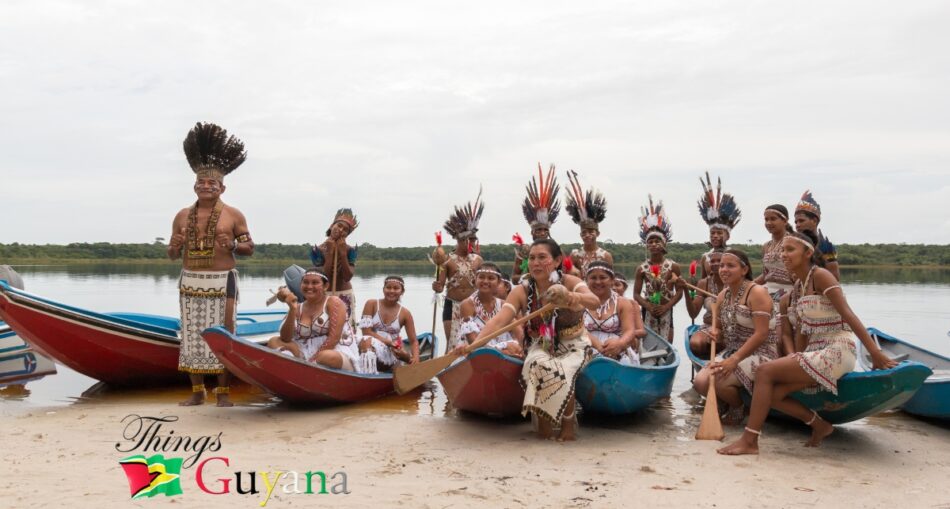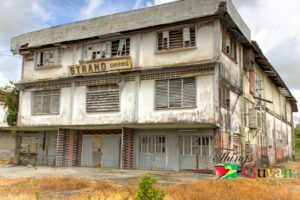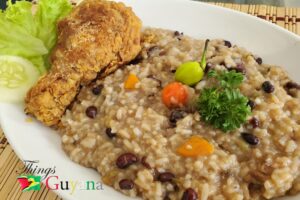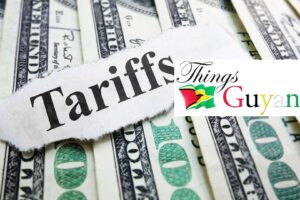Guyana, a nation rich in natural resources and cultural diversity, owes much of its unique identity and development to its Indigenous peoples, the original inhabitants of this land.1 Often relegated to the periphery of national narratives, their historical and contemporary contributions have been fundamental in shaping the nation’s past, influencing its present, and holding valuable keys to its future. This article seeks to explore the profound and multifaceted impact of Indigenous peoples on modern Guyana, delving into their ancient heritage, their complex interactions with colonisers, their enduring cultural legacy, their invaluable traditional knowledge, their evolving roles in contemporary society, the significant contributions of their individuals and communities, the challenges they continue to face, and the crucial importance of their recognition and representation in Guyana’s national consciousness.
A Historical Journey
The story of Indigenous peoples in Guyana is a long and rich one, predating the arrival of European colonisers by millennia.3 The first inhabitants are believed to have migrated from Eurasia as early as 35,000 years ago, eventually forming distinct groups such as the Carib (Galibi or Kalinago), Arawak (Taino), Warrau, Wayana, and Akawai.1 These early settlers adapted to Guyana’s diverse geography, which ranges from coastal plains to highlands, forests, and savannahs, establishing societies with unique cultures and practices.4 Among the earliest communities were groups of Arawak, Carib, and possibly Warao, who practiced shifting agriculture supplemented by hunting and fishing.2 The Arawak, known for their agricultural skills, hunting, and fishing, settled along the coast and throughout the Caribbean islands, while the more bellicose Carib occupied the interior.3 These pre-colonial societies were not monolithic; rather, they were complex, with established social structures, governance systems, and sophisticated knowledge of their environments.2
The arrival of European colonisers in the late 15th and early 16th centuries marked a significant turning point in the history of Guyana and its Indigenous peoples.1 While Christopher Columbus sighted the Guyana coast in 1498, it was the Dutch who established the first permanent European settlements around 1580, primarily for trade with the Indigenous communities.2 This initial trade relationship soon evolved into territorial acquisition as other European powers, including the British and Spanish, sought to gain control over the region.3 Colonization had a devastating impact on Indigenous populations, leading to significant declines due to the introduction of European diseases, the Indian slave trade, intense warfare, and forced migration.3 The Dutch, who gained official sovereignty over the region by 1648, also introduced African slaves to cultivate sugarcane, further altering the social and demographic landscape.3 Indigenous peoples played various roles in these colonial dynamics, sometimes acting as trading partners and at other times providing militia services, such as hunting escaped slaves for the Dutch and later the British.6 While some groups, like the Lokono (Arawak), were generally more accommodating to the European presence and engaged in trading relations 7, others, such as the Kalihna (Carib), were known for their resistance.7
Despite the profound disruptions caused by colonization, Indigenous peoples in Guyana demonstrated remarkable resilience and adaptability.4 Facing loss of land, sovereignty, and traditional ways of life, many retreated further into the interior, relying on their deep traditional knowledge and practices for survival.4 This knowledge, accumulated over millennia, enabled them to navigate the diverse ecosystems of Guyana, sustain themselves through hunting, fishing, and agriculture, and maintain their cultural identities in the face of immense pressure.9 Their adaptation also involved navigating new relationships with other groups brought to Guyana, including Afro-Guyanese and Indo-Guyanese, leading to cultural exchanges and, in some cases, intermarriage, particularly among coastal Indigenous communities.4 Over time, the struggle for land rights and recognition became a central aspect of Indigenous peoples’ efforts to maintain their cultural integrity and ensure their future in Guyana.11 Despite the challenges, their enduring presence and continued connection to their ancestral lands stand as a testament to their strength and resilience.4
The Enduring Cultural Legacy
The cultural contributions of Indigenous peoples are woven into the very fabric of Guyana’s national identity, enriching its linguistic landscape, artistic expressions, and spiritual heritage. Guyana is home to a diverse array of Indigenous languages, primarily belonging to the Arawakan, Cariban, and Warao language families.7 Among the nine officially recognized Indigenous languages are Akawaio, Macushi, Waiwai, Arawak (Lokono), Patamona, Warrau, Carib (Kalihna), Wapishana, and Arekuna.6 While English serves as the official language of Guyana, Guyanese Creole, widely spoken throughout the nation, incorporates elements from African, Indian, Dutch, and Indigenous Arawakan languages, highlighting the historical interactions and cultural fusion that have shaped the country’s linguistic character.13 Despite the increasing dominance of English and Creole, efforts are underway within Indigenous communities to preserve and revitalize their ancestral languages, recognizing them as vital carriers of cultural heritage and identity for future generations.13
Traditional customs and practices form a significant part of Indigenous cultural life in Guyana. Characterized by communal living and deep connections to the land, these traditions encompass a wide range of activities, from subsistence farming and hunting to intricate social structures and governance systems.4 Storytelling and folklore play a crucial role in preserving Indigenous cultures, transmitting ancestral knowledge, and maintaining social cohesion across generations.17 These narratives often carry moral lessons, historical accounts, and spiritual beliefs, reinforcing the values and worldview of Indigenous communities.19 Traditional Guyanese cuisine also bears the indelible mark of Indigenous influence, with staples like cassava bread and pepperpot being integral to the national culinary identity and enjoyed by Guyanese of all ethnic backgrounds.6 The tradition of “Cook-up Rice,” a popular one-pot dish with African origins, has also become a staple in Guyanese cuisine, further illustrating the blending of cultural influences over time.
Traditional art forms of Indigenous peoples in Guyana are rich and diverse, encompassing intricate crafts, weaving, pottery, and jewelry, often utilizing natural materials from their surroundings.7 These artistic expressions reflect a deep connection to nature, with motifs and designs inspired by the flora, fauna, and spiritual beliefs of their communities.21 Music and dance are also integral to Indigenous cultural life, playing significant roles in ceremonies, rituals, and social gatherings.16 Traditional songs and dances often tell stories, convey historical knowledge, and celebrate important life events, serving as vital forms of cultural expression and continuity.16 The influence of Indigenous art and music extends beyond their communities, inspiring contemporary Guyanese artists and musicians and contributing to the nation’s broader artistic landscape.22
Spiritual beliefs of Indigenous peoples in Guyana are deeply intertwined with their relationship to the natural world, characterized by a profound respect for the land, rivers, and forests, and a reverence for ancestral spirits.17 Many Indigenous communities believe that spirits inhabit certain natural features, such as trees and rivers, leading to the development of sacred practices and protocols for interacting with these sites.23 While the arrival of Christian missionaries has influenced Indigenous spiritual practices over time, leading to the emergence of syncretic religions like the Alleluia church, traditional beliefs and practices continue to hold significant cultural and spiritual importance for many Indigenous peoples in Guyana.4
Wisdom of the Land: Traditional Knowledge
Indigenous peoples in Guyana possess an extensive and invaluable body of traditional knowledge, accumulated through generations of close interaction with their environment. This knowledge spans various fields, including agriculture, medicine, conservation, and sustainable resource management, holding significant relevance for modern Guyana. Traditional farming techniques employed by Indigenous communities, such as shifting cultivation and intercropping, demonstrate a deep understanding of ecological balance and sustainable land use.25 Cultivation of staple crops like cassava, utilizing traditional methods passed down through generations, forms the backbone of their food systems and reflects an intimate knowledge of local plant varieties and their adaptation to the environment.27 Furthermore, Indigenous agricultural practices have shown remarkable adaptability to changing climate conditions, offering valuable insights for developing resilient and sustainable agricultural strategies in the face of modern environmental challenges.8
The knowledge of medicinal plants and traditional healing practices within Indigenous communities in Guyana is vast and sophisticated, representing centuries of observation and experimentation.18 This rich pharmacopoeia includes remedies for a wide range of ailments, utilizing the diverse flora of Guyana’s forests and savannahs.29 Traditional healing practices, often intertwined with spiritual beliefs, continue to be an important aspect of healthcare in Indigenous communities, and this knowledge holds potential for wider application in modern medicine, warranting further research and recognition.32
Indigenous peoples in Guyana have long acted as stewards of the land, developing traditional practices for wildlife conservation, fishing, and forestry that promote sustainability and maintain the delicate balance of ecosystems.24 Their deep ecological knowledge has contributed significantly to the preservation of Guyana’s rich biodiversity, with Indigenous-managed lands often exhibiting lower rates of deforestation compared to other areas.18 Community-led conservation initiatives, drawing upon traditional knowledge and practices, have proven to be effective in protecting endangered species and managing natural resources sustainably, highlighting the crucial role of Indigenous peoples in safeguarding Guyana’s natural heritage.37
Indigenous Peoples in the Fabric of Modern Guyana
Today, Indigenous peoples in Guyana are actively engaged in various aspects of modern society, asserting their rights, contributing to the economy, and pursuing educational opportunities while striving to maintain their cultural identities. In the political sphere, Indigenous peoples exercise their democratic rights, participating in national elections and holding representation in the National Assembly.12 The National Toshaos Council (NTC) serves as a vital representative body, bringing together Indigenous leaders from across Guyana to discuss issues of concern and advocate for their rights, including land rights, self-determination, and greater political autonomy.11
Economically, Indigenous peoples are involved in a range of activities, contributing to Guyana’s development through agriculture, forestry, mining, and increasingly, tourism.6 Community-based eco-tourism initiatives are growing, allowing Indigenous communities to share their cultural heritage and the natural beauty of their territories with visitors in a sustainable manner, providing economic benefits while preserving their way of life.44 However, the extraction of natural resources on Indigenous lands continues to present both opportunities and challenges, requiring careful negotiation and respect for Indigenous rights and environmental sustainability.6
Access to education for Indigenous children and youth has seen improvements, yet challenges related to language barriers and the cultural relevance of the curriculum persist.46 Initiatives such as the Quality Bilingual Education Program in some communities aim to address these challenges by incorporating Indigenous languages and cultural knowledge into the learning process, striving to improve educational outcomes and ensure cultural continuity.46
Pioneers and Progress: Notable Contributions
Throughout Guyana’s history, numerous Indigenous individuals, communities, and initiatives have made significant contributions across various fields, leaving an indelible mark on the nation’s development. In politics, Stephen Campbell, an Arawak, holds the distinction of being Guyana’s first Indigenous Member of Parliament, paving the way for more excellent Indigenous representation in governance.51 Sydney Allicock, a prominent figure in Guyanese politics, served as Vice-President, advocating for the rights and well-being of Indigenous peoples.6 In the arts and culture, individuals like artist George Simon have gained national and international recognition, showcasing Indigenous perspectives and creativity.6
Community-led initiatives have also demonstrated remarkable progress. The South Rupununi Conservation Society (SRCS), an Indigenous-led organization, has been instrumental in protecting endangered species and promoting sustainable resource management in the Rupununi region.41 Rewa Eco Lodge stands as a successful example of community-based eco-tourism, providing economic opportunities for the local Indigenous community while promoting conservation.45 The village of Moraikobai has also embarked on a significant eco-tourism boom, utilizing government allocations to develop infrastructure and agricultural projects that enhance food security and attract visitors.44 These examples highlight the diverse and impactful contributions of Indigenous peoples to Guyana’s progress.
Navigating the Present, Shaping the Future: Challenges and Resilience
Despite their significant contributions, Indigenous peoples in Guyana continue to face a multitude of challenges in the modern era. Issues related to land rights remain paramount, with many communities still lacking full legal recognition of their ancestral territories and facing encroachment from mining and logging operations.6 Access to essential services such as healthcare, education, and infrastructure remains limited in many remote Indigenous communities, perpetuating disparities and hindering socio-economic development.4 The impacts of climate change disproportionately affect Indigenous livelihoods, disrupting traditional agricultural practices, threatening food security, and altering ecosystems upon which they depend.8 Furthermore, the pressures of modernization pose ongoing challenges to the preservation of Indigenous languages, cultural practices, and traditional knowledge.13
In the face of these challenges, Indigenous peoples in Guyana have demonstrated remarkable resilience and have undertaken numerous initiatives to overcome these obstacles while contributing to the nation’s progress. Through advocacy at local, national, and international levels, Indigenous organizations and leaders continue to push for the recognition and respect of their rights, including land rights and self-determination.11 Community-led organizations are actively involved in environmental monitoring, sustainable resource management, and the development of culturally appropriate solutions to local issues.11 Efforts to revitalize Indigenous languages and promote cultural heritage are also gaining momentum within communities and through partnerships with government and non-governmental organizations.13 These ongoing efforts highlight the determination and agency of Indigenous peoples in shaping their future and contributing to a more just and equitable Guyana.
Recognition and Representation
The representation of Indigenous culture and history within Guyana’s national narratives, the education system, and public spaces is crucial for fostering a sense of national unity that truly reflects the country’s diverse heritage. While Indigenous culture is acknowledged as an important element in museum displays and as inspiration in local arts, there is a need for more comprehensive and accurate representation within national symbols and narratives.22 The Amerindian head-dress on the Coat of Arms stands as a significant symbol of Indigenous presence 55, but further integration of Indigenous history, culture, and perspectives is needed across various platforms to ensure a more inclusive national identity.60
The national education curriculum has historically been criticized for its lack of focus on Indigenous history and culture, often prioritizing Western perspectives and neglecting the rich heritage of Guyana’s first peoples.35 Recent initiatives, such as the Quality Bilingual Education Program, represent positive steps towards incorporating Indigenous languages and cultural knowledge into the education system.46 However, sustained and comprehensive efforts are needed to ensure that Indigenous history and culture are accurately and meaningfully integrated into the curriculum at all levels, fostering a deeper understanding and appreciation among all Guyanese.50 Enhancing the visibility and representation of Indigenous culture in public spaces, through monuments, cultural centers, and educational programs, can further contribute to a national narrative that truly honors the diverse contributions of all its peoples.
Conclusion
The contributions of Indigenous peoples to modern Guyana are profound and far-reaching, extending from their ancient pre-colonial heritage to their active engagement in contemporary society. Historically, they were the first stewards of the land, developing sophisticated societies and deep ecological knowledge. Despite the challenges of colonization and its enduring impacts, Indigenous peoples have demonstrated remarkable resilience, maintaining their cultural identities and contributing significantly to Guyana’s rich cultural tapestry. Their traditional knowledge in agriculture, medicine, and conservation holds invaluable lessons for sustainable development and environmental stewardship in the modern era.
Today, Indigenous peoples are active participants in Guyana’s political, economic, and educational spheres, advocating for their rights and contributing to the nation’s progress in diverse fields. Their ongoing efforts to preserve their languages, cultures, and traditional knowledge, coupled with their increasing engagement in national life, underscore their vital role in shaping Guyana’s future. Recognizing, respecting, and supporting the rights and contributions of Indigenous peoples is not only a matter of justice but also essential for building a truly inclusive, prosperous, and sustainable Guyana for all its citizens.
References
- minorityrights.org, accessed on April 14, 2025, https://minorityrights.org/country/guyana/#:~:text=Pre%2Dcolonial%20Guyana,to%20settle%20were%20from%20Holland.
- Guyana – Colonialism, Independence, Culture | Britannica, accessed on April 14, 2025, https://www.britannica.com/place/Guyana/History
- History of Guyana – Wikipedia, accessed on April 14, 2025, https://en.wikipedia.org/wiki/History_of_Guyana
- Guyana – Minority Rights Group, accessed on April 14, 2025, https://minorityrights.org/country/guyana/
- The History of Guyana | Chimu Adventures, accessed on April 14, 2025, https://www.chimuadventures.com/en/blog/history-guyana
- Indigenous peoples in Guyana – Wikipedia, accessed on April 14, 2025, https://en.wikipedia.org/wiki/Indigenous_peoples_in_Guyana
- Indigenous peoples in Guyana – Minority Rights Group, accessed on April 14, 2025, https://minorityrights.org/communities/indigenous-peoples-3/
- Climate Change | United Nations For Indigenous Peoples, accessed on April 14, 2025, https://www.un.org/development/desa/indigenouspeoples/climate-change.html
- Indigenous People and Traditional Knowledge – Guyana Chronicle, accessed on April 14, 2025, https://guyanachronicle.com/2020/11/28/indigenous-people-and-traditional-knowledge/
- From resilience to viability: a case study of indigenous communities of the North Rupununi, Guyana – OpenEdition Journals, accessed on April 14, 2025, https://journals.openedition.org/echogeo/13411
- Our Land, Our Life, Our Culture: The Indigenous Movement In Guyana | Cultural Survival, accessed on April 14, 2025, https://www.culturalsurvival.org/publications/cultural-survival-quarterly/our-land-our-life-our-culture-indigenous-movement-guyana
- The Indigenous World 2021: Guyana – IWGIA, accessed on April 14, 2025, https://iwgia.org/en/guyana/4221-iw-2021-guyana.html
- Guyana: Official and widely spoken languages – TRAVEL.COM®, accessed on April 14, 2025, https://travel.com/world/regions/south-america/guyana/guyana-official-and-widely-spoken-languages/
- A Useful Overview of the Languages of Guyana – World Schoolbooks, accessed on April 14, 2025, https://worldschoolbooks.com/a-useful-overview-of-the-languages-of-guyana/
- In Guyana, saving an Indigenous language from dying out with its last speakers – Mongabay, accessed on April 14, 2025, https://news.mongabay.com/2021/12/in-guyana-saving-an-indigenous-language-from-dying-out-with-its-last-speakers/
- Showcasing Amerindian Culture Through Traditional Dances – NCN Guyana, accessed on April 14, 2025, https://ncnguyana.com/2023/showcasing-amerindian-culture-through-traditional-dances/
- Amerindian Heritage month: A deep dive into the culture and celebrations, accessed on April 14, 2025, https://www.guyanastandard.com/2023/09/10/amerindian-heritage-month-a-deep-dive-into-the-culture-and-celebrations/
- Contributions of Guyana’s First Peoples, accessed on April 14, 2025, https://guyanachronicle.com/2019/09/27/contributions-of-guyanas-first-peoples/
- Guyana: Indigenous folklore and their role in preserving culture, traditions, accessed on April 14, 2025, https://guyaneseonline.wordpress.com/2017/09/05/guyana-indigenous-folklore-and-their-role-in-preserving-culture-traditions/
- Culture – Travel Guyana, accessed on April 14, 2025, https://www.travelguyana.co/culture/
- The Cultural Landscape of Guyana | LAC Geo, accessed on April 14, 2025, https://lacgeo.com/cultural-landscape-guyana
- Guyana – Indigenous, Creole, Caribbean | Britannica, accessed on April 14, 2025, https://www.britannica.com/place/Guyana/Cultural-life
- CULTURE | Discover Guyana, accessed on April 14, 2025, https://www.guyanatourism.com/culture
- Cultural Beliefs Around Forest and Conservation in Guyana: A Unique Blend of Tradition, Biodiversity, and Responsibility, accessed on April 14, 2025, https://www.travelguyana.co/2024/11/08/cultural-beliefs-around-forest-and-conservation-in-guyana-a-unique-blend-of-tradition-biodiversity-and-responsibility/
- The Indigenous Roots of Regenerative Agriculture – Rainforest Alliance, accessed on April 14, 2025, https://www.rainforest-alliance.org/insights/the-indigenous-roots-of-regenerative-agriculture/
- Guyana’s farming future in the climate crisis: much can be done, accessed on April 14, 2025, https://alliancebioversityciat.org/stories/guyanas-farming-future-climate-crisis-much-can-be-done
- History: Indigenous or Amerindian settlements in Guyana – Guyanese Online, accessed on April 14, 2025, https://guyaneseonline.wordpress.com/2019/09/01/history-indigenous-or-amerindian-settlements-in-guyana/
- How climate change is affecting indigenous staple in Guyana, accessed on April 14, 2025, https://climatetrackercaribbean.org/climate-justice/how-climate-change-is-affecting-indigenous-staple-in-guyana/
- Medicinal Plants of the Guianas (Guyana, Surinam, French Guiana) – Smithsonian National Museum of Natural History, accessed on April 14, 2025, https://naturalhistory.si.edu/media/1868
- The use of Amerindian charm plants in the Guianas – PMC, accessed on April 14, 2025, https://pmc.ncbi.nlm.nih.gov/articles/PMC4570145/
- (PDF) Notes on Guyana’s medical ethnobotany – ResearchGate, accessed on April 14, 2025, https://www.researchgate.net/publication/225625175_Notes_on_Guyana’s_medical_ethnobotany
- Notes on Guyana’s medical ethnobotany – Scite, accessed on April 14, 2025, https://scite.ai/reports/notes-on-guyana-s-medical-ethnobotany-Y2EPx2
- Indigenous Heritage 2020: Uses of the lime tree – Cobra Collective, accessed on April 14, 2025, https://cobracollective.org/news/indigenous-heritage-2020-uses-of-the-lime-tree.php
- MEDICINE FROM TREES – North Rupununi group bottling traditional medicine, accessed on April 14, 2025, https://guyanachronicle.com/2015/03/29/medicine-from-trees-north-rupununi-group-bottling-traditional-medicine/
- Study on Indigenous Women and Children in Guyana – Unicef, accessed on April 14, 2025, https://www.unicef.org/lac/media/4691/file/PDF%20Study%20on%20indigenous%20women%20and%20children%20in%20Guyana.pdf
- Wildlife conservation by Indigenous People in Guyana, accessed on April 14, 2025, https://www.fao.org/in-action/swm-programme/videos-detail/wildlife-conservation-by-indigenous-people-in-guyana/en
- Conservation in the Rupununi: Preserving Nature and Culture, accessed on April 14, 2025, https://visitrupununi.com/conservation-rupununi/
- A community in Guyana relies on indigenous knowledge in conservation – Mongabay, accessed on April 14, 2025, https://news.mongabay.com/2019/01/a-community-in-guyana-relies-on-indigenous-knowledge-in-conservation/
- Buried Treasure: What Gold Mining in Guyana Means for Indigenous Peoples, Traditional Knowledge, and Sustainability – ScholarWorks@UARK, accessed on April 14, 2025, https://scholarworks.uark.edu/cgi/viewcontent.cgi?article=1012&context=ingsuht
- Listening to the voices of indigenous peoples is the only way to protect people and planet, accessed on April 14, 2025, https://guyana.un.org/en/139367-listening-voices-indigenous-peoples-only-way-protect-people-and-planet
- South Rupununi Conservation Society – Equator Initiative, accessed on April 14, 2025, https://www.equatorinitiative.org/2024/06/18/south-rupununi-conservation-society/
- input – ohchr, accessed on April 14, 2025, https://www.ohchr.org/sites/default/files/documents/issues/minorities/sr/cfis/instinstitutional-designsitutional-designs/subm-sr-minority-issues-sta-permanent-mission-guyana-un-in-eneva.docx
- (PDF) guyana indigenous peoples – ResearchGate, accessed on April 14, 2025, https://www.researchgate.net/publication/280611378_guyana_indigenous_peoples
- The Indigenous Guyanese village steering its eco-tourism boom – Climate Tracker, accessed on April 14, 2025, https://climatetrackercaribbean.org/climate-justice/the-indigenous-guyanese-village-steering-its-own-eco-tourism-boom/
- Indigenous Guyanese Tap Tourism to Save Their Huge Fish | GSTC, accessed on April 14, 2025, https://www.gstcouncil.org/indigenous-guyanese-tap-tourism-to-save-their-huge-fish/
- The Guyanese school educating indigenous children in their native …, accessed on April 14, 2025, https://www.americamagazine.org/politics-society/2020/02/10/guyanese-school-educating-indigenous-children-their-native-language
- More than 20% of GOAL Scholarships awarded to indigenous …, accessed on April 14, 2025, https://www.guyanastandard.com/2024/09/04/more-than-20-of-goal-scholarships-awarded-to-indigenous-people-pres-ali/
- Guyana – Education Sector Improvement Project – Early Warning System, accessed on April 14, 2025, https://ewsdata.rightsindevelopment.org/files/documents/19/WB-P159519_QAzYqyF.pdf
- Bridging the Digital Divide: Empowering Indigenous Regions through Internet Connectivity in Guyana | United Nations Development Programme, accessed on April 14, 2025, https://www.undp.org/latin-america/blog/bridging-digital-divide-empowering-indigenous-regions-through-internet-connectivity-guyana-0
- Reflection on conventional Education and Indigenous people in …, accessed on April 14, 2025, https://www.stabroeknews.com/2019/09/02/features/in-the-diaspora/reflection-on-conventional-education-and-indigenous-people-in-guyana/
- 14 indigenous persons recognised for contributions to Guyana’s development, accessed on April 14, 2025, https://www.kaieteurnewsonline.com/2017/09/21/14-indigenous-persons-recognised-for-contributions-to-guyanas-development/
- The Indigenous World 2024: Guyana – IWGIA, accessed on April 14, 2025, https://iwgia.org/en/guyana/5383-iw-2024-guyana.html
- The Food and Water Challenges of Guyana’s Indigenous Communities, accessed on April 14, 2025, https://www.cijn.org/food-and-water-challenges-of-guyanas-indigenous-communities/
- The Arts of Guyana: A Multicultural Caribbean Adventure – Publications, accessed on April 14, 2025, https://publications.iadb.org/publications/english/document/The-Arts-of-Guyana-A-Multicultural-Caribbean-Adventure.pdf
- GUYANAS NATIONAL SYMBOLS, accessed on April 14, 2025, https://members.tripod.com/n_king/id6.htm
- NATIONAL SYMBOLS – Guyana News and Information, accessed on April 14, 2025, http://www.guyananews.org/Handbook/symbols.html
- SYMBOLS OF NATIONHOOD – Guyana Times International, accessed on April 14, 2025, https://www.guyanatimesinternational.com/symbols-of-nationhood/
- National Symbols – Guyana Consulate Texas, accessed on April 14, 2025, https://guyanaconsulatetexas.weebly.com/national-symbols.html
- The Coat of Arms, accessed on April 14, 2025, https://factpage.glsc.gov.gy/home/the-coat-of-arms/
- View of Indigeneity and the Indo-Caribbean in Cyril Dabydeen’s Dark Swirl | Studies in Canadian Literature, accessed on April 14, 2025, https://journals.lib.unb.ca/index.php/scl/article/view/24288/28091
- Guyana’s National Identity in Comparative Perspective: Lessons from Switzerland and Turkey, accessed on April 14, 2025, https://guyanabusinessjournal.com/2025/03/guyanas-national-identity-in-comparative-perspective-lessons-from-switzerland-and-turkey/amp/
- education.gov.gy, accessed on April 14, 2025, https://education.gov.gy/web2/index.php/other-resources/publications/876-final-indigenous-people-plan-gesip-p159519-february-6-2017-2/file
Discover more from Things Guyana
Subscribe to get the latest posts sent to your email.







